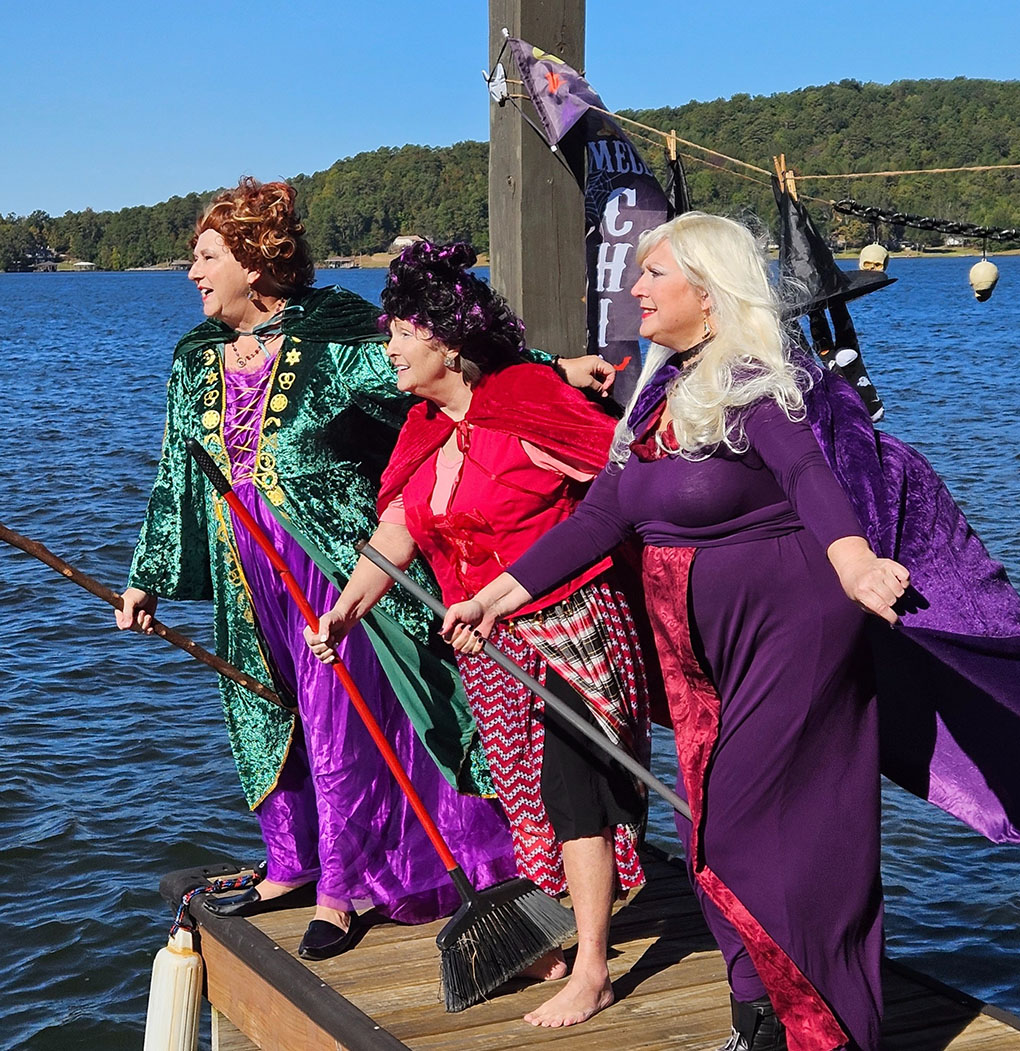Marking History: Plaques at Cropwell Historical Park recognize local events
Published 10:02 am Friday, July 14, 2017

- The historic marker unveiling ceremony in Cropwell Historical Park is concluded with a bugle solo of “Taps,” played by Kayla Glidewell on Friday, July 7.
A crowd of city officials and citizens gathered in Cropwell Historical Park on Friday at 4 p.m. for the unveiling of the newly refurbished historic marker commemorating Cropwell’s roots, originally founded as the town of Diana.
Trending
Despite the humid weather and storm on the horizon, a special commemorative ceremony was held, beginning with an invocation from St. Clair County District Judge Alan Furr, followed by the posting of the colors and Pledge of Allegiance by Bill Watkins and local group Sons of Confederate Veterans.
After a rendition of “God Bless America” by music director Rev. Andy Hadley of Cropwell Baptist Church, former Pell City Councilman Gaston Williamson gave his remarks on the establishment of the park and the history it preserves.
“I’m proud of this beautiful park, and the history it represents,” said Williamson. “I also appreciate the dedication of the original committee members, the City Council, Mayor and the St. Clair County Commission for making this possible.”
The land for the Cropwell Historical Park project was donated by the County around 1972, and the park was established in 1975. The work was started on the park earlier that year and completed sometime in the fall. It was initially supported financially by interested citizens, and is now maintained by the City of Pell City.
The park serves as a record of the area’s significant events. These historic events are engraved into plaques set in five large boulders obtained in St. Clair County by the Cropwell Park Committee.
The refurbished historic marker reads, “CROPWELL HISTORICAL PARK—ST.CLAIR COUNTY—ALABAMA—Post office established as Diana, 1834—Name changed to Cropwell, 1837.”
“As you look around at the five boulders, all mined from St. Clair County—that makes it a little more special,” Williamson stated.
The largest boulder has a bronze plaque commemorating the spot where in June of 1861, 139 men took the oath to join the army of the Confederate States of America, explained Williamson. These men became members of Company F of the 10th Alabama Infantry Regiment.
Shortly after taking the oath, they marched 75 miles to Montevallo, where they caught a train to Virginia, Williamson continued. Once they arrived at Bull Run, they joined the troops under the leadership of General Robert E. Lee. They fought in many battles, including many famous battles, such as John Brown’s raid at Harpers Ferry and the Battle of Gettysburg.
“If you look at the names on the plaque, a lot of these families still live in the area,” stated Williamson, whose father was mayor when the Cropwell Park Committee was first formed.
The Cropwell Park Committee was originally composed of members W.D. Jackson, James Ingram, George Williams, Charles Abbott, and Mary Mays, who spearheaded the committee’s formation, explained Williamson.
“Ms. Mays had a certain way of getting to the committee members and motivating them,” Williamson said.
The next speaker was David Jackson, whose father was the late W.D. Jackson, Cropwell Park Committee founding member and St. Clair County extension agent from 1946 until his retirement in 1981.
David Jackson, who carries on his father tradition as an active participant in the community, shared his memories of the park’s beginnings.
“As we approach St. Clair County’s bicentennial year, I think it’s very appropriate that we take the time to recognize some of the places of historical significance in the county, as well as recognize those who worked to establish and preserve places like the Cropwell Historical Park,” began Jackson.
“When I was asked to say a few words today, my mind immediately went to a hot summer afternoon in 1975 much like this, when I helped my dad lay the sod on this very ground for this park. It must have been 100 degrees, and all of a sudden it came up in rain. It’s very ironic,” Jackson said to appreciative chuckles from attendees, thunder rolling in the distance as if on cue.
“You know how it gets (around here), when it’s just so hot and muggy you can barely get your breath. I wanted to quit as a teenage boy. But no, daddy, always the county agent, had to finish the job. He said this was the best kind of weather to lay sod, because it would help it to grow and take root quicker to be rainy and muddy. So we finished it,” Jackson said.
“Looking back, that’s not much of a memory for a teenage boy, but 42 years down the road, it’s quite a memory, time spent with your dad,” Jackson remarked. “So I’m pleased today to recognize my dad for the role he played in making this park a reality.”
“Another recollection I have is the many phone calls that my dad got from Mary Mays. She was truly the driving force behind this park,” Jackson continued, reiterating Williamson’s sentiments. “She routinely called regarding various plans for the park.”
“Many of those calls involved the process of finding the right boulders. It was really important to find the right type of stone, the right shape, and most importantly, that it comes from St. Clair County. I’m sorry to say I do not know the exact place they ended up finding it, but I think that they did a good job, for they are standing the test of time,” concluded Jackson, prior to thanking the City of Pell City for their involvement.
“When we first started the refreshment of this area over here, we reached out to a lot of different sources, to Ms. (Susan) Mann and Mr. (Danny) Stewart at the (Pell City Public) Library, to do some research to educate me as a newcomer to the area about the history of this monument,” said Pell City City Manager Brian Muenger, next up on the docket. “I really think that is what monuments like this serve to do for our community, is to remind us where the community came from…It is so important to look back and appreciate all the great things that happened in the history of St. Clair County and here in Pell City.
“As we approach the bicentennial, the State very generously made available some grants to refresh some of these monuments that have been out in the weather for all these years. And so we wrote in, made an application,” Muenger explained. “They obviously saw a lot of merit in our application and generously picked the monument up and refurbished it probably as nicely as it looked the day that it was first unveiled back in the ‘70s.”
Judge Furr, Williamson and Jackson then performed the honor of unveiling the marker. A benediction was given once again by Rev. Hadley, followed by the placement of a commemorative wreath in front of the largest monolith, aforementioned by Williamson, at the center of the park. A gun (or musket) salute was performed by Bill Watkins and the Sons of Confederate Veterans, and the ceremony was concluded with a bugle solo of “Taps,” played by Kayla Glidewell.
“I’m sure that (the Cropwell Historical Committee members) all hoped that future generations would recognize this park as more than just rocks, more than plaques, and more than brick walkways,” Jackson commented. “It represents the history of the Cropwell community, and the memory of those from the community who volunteered for military service.”
The unveiling was originally scheduled for June 22 around the same time, but was put on hold due to inclement weather.
Cropwell Historical Park is located on Mays Drive, off the Hardwick Road intersection.
For more information on Cropwell Historical Park or the refurbished marker, contact Susan Mann, Assistant Director/Adult Services at the Pell City Public Library, at (205) 884-1015 or smann@cityofpellcity.net.



